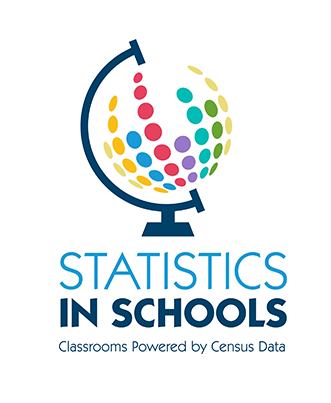Visualizations
-
Young Adults: Then and NowWith this infographic, students can see how the experiences of young adults have changed over time.
-
Measuring America - Why We AskThe American Community Survey (ACS) asks questions about our lives—how old we are, how much we earn, whether we work or go to school, and more.
-
An American CommunityThe ACS enables communities to appropriately fund school-lunch, place new hospitals, build businesses and take other actions that lead to healthy communities.
-
A Child's DayThis visualization provides a look at children's participation in extracurricular activities and various interactions in their lives.
-
HELLO my name is...Learn about the top 15 most popular last names in the U.S. by rank and discuss different trends and changes with your students.
-
Following the Frontier Line, 1790 to 1890This data visualization highlights population expansion into new territory, subsequent gains in population density, and increasing urbanization.
-
Increasing Urbanization Population DistributionThis data visualization reveals how the number and size of cities has increased between 1790 and 1890
-
The Great Migration, 1910 to 1970The Great Migration generally refers to the massive internal migration of Blacks from the South to urban centers in other parts of the country.
-
Before and After 1940: Change in Population DensityThis interactive data visualization includes three maps.
-
A Decade of State Population ChangeThis data visualization takes a detailed look at annual percentage change in state population over the last decade and shows variation in growth patterns.
-
Islands of High IncomeMedian household income varies by county across the United States.
-
Gaining and Losing SharesThis data visualization shows population distribution by region between 1790 and 2010.
-
1-90 Population Density Profile 2010Passing through some of the most sparsely populated territory in the country, I-90 connects Seattle, Chicago, Cleveland, Buffalo, and Boston.
-
I-95 Population Density Profile, 2010Running from Florida to Maine, I-95 passes through 15 states and several major cities.
-
I-5 Population Density ProfileOf the major interstates in the country, I-5 passes through the second-largest population (behind only I-95 on the nation's east coast).
-
Blooming StatesThis interactive data visualization shows the state-by-state population growth measured by the decennial censuses from 1790 to 2010.
-
Population Shift to the West and SouthEach bar represents the percentage of the population living within 2 degrees of longitude.
-
Median Household Income by County in the United States and Puerto RicoThis data visualization includes median household income statistics for the United States, the 50 states, and the District of Columbia.
Page Last Revised - July 8, 2025




